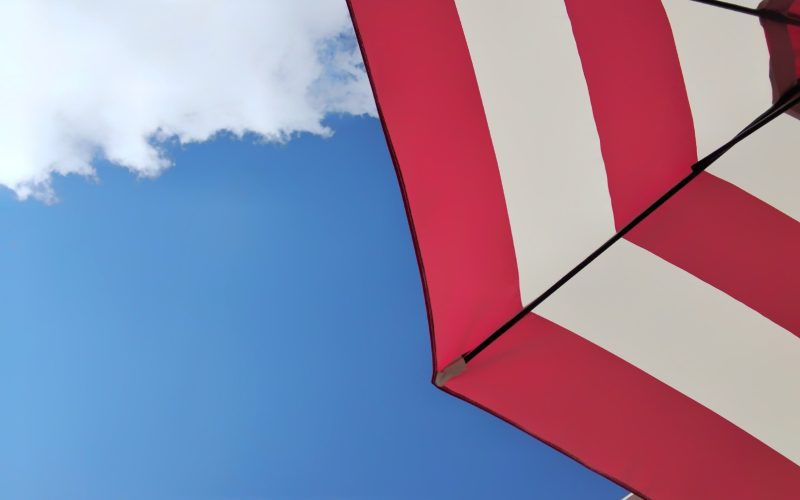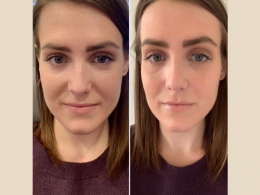Are you aware that the sun’s harmful UV rays are not only responsible for skin cancer, but also premature aging? That’s right! Exposure to the sun without proper protection can lead to wrinkles, age spots and sagging skin. But don’t worry; we have good news for you. By incorporating daily sun protection into your skincare routine, you can prevent both skin cancer and premature aging. In this blog post, we’ll dive into the benefits of daily sunscreen use and why it should be a non-negotiable part of your skincare regimen. So grab a hat and some SPF, let’s get started!
The Dangers of Ultraviolet Radiation
Ultraviolet (UV) radiation is a type of electromagnetic radiation that comes from the sun and artificial sources like tanning beds. UV radiation can damage your skin in as little as 15 minutes, and the effects are cumulative, meaning they add up over time. Just one bad sunburn can increase your risk of skin cancer.
Repeated exposure to UV radiation can also cause premature aging of the skin, including wrinkles, age spots, and a duller complexion. In fact, 90% of visible skin aging is caused by sun exposure.
You can protect yourself from the harmful effects of UV radiation by using sunscreen with an SPF of 30 or higher, wearing protective clothing, and avoiding direct sun exposure during the peak hours of 10 am to 4 pm.
The Benefits of Sun Protection
There are many benefits to protecting your skin from the sun. Sun protection can help prevent skin cancer, premature aging, and other skin conditions.
Sun protection is the best defense against skin cancer, the most common type of cancer in the United States. Skin cancer is caused by exposure to ultraviolet (UV) radiation from the sun or other sources, such as tanning beds or lamps. UV radiation can damage the DNA in your skin cells and lead to cancer.
Sun protection can also help prevent premature aging of the skin. Ultraviolet radiation from the sun can cause wrinkles, age spots, and other changes in your skin. Daily sun protection can help reduce these changes and keep your skin looking younger longer.
In addition to preventing skin cancer and premature aging, sun protection can also help prevent other skin conditions, such as:
-sunburns
-skin rashes
-dry, cracked, or peeling skin
-blisters
-cellulitis
The Best Sunscreen for Daily Use
There are many sunscreens on the market, but not all of them are created equal. When choosing a sunscreen for daily use, it is important to select one that is broad-spectrum, has an SPF of 30 or higher, and is water-resistant.
Broad-spectrum sunscreens protect against both UVA and UVB rays, which are the two types of ultraviolet radiation that can damage the skin. UVA rays cause premature aging and wrinkles, while UVB rays are the main cause of sunburns.
An SPF of 30 or higher is needed to provide adequate protection against the harmful effects of the sun’s rays. Water resistance is also important for those who sweat or swim frequently during the day.
There are many great options on the market for daily sunscreen use. Some of our favorites include EltaMD UV Daily Broad-Spectrum SPF 40 Sunscreen, Neutrogena Ultra Sheer Dry-Touch Sunscreen SPF 70, and La Roche-Posay Anthelios 60 Melt-In Sunscreen Milk.
All of these sunscreens are broad-spectrum, have an SPF of 30 or higher, and are water-resistant – making them ideal for daily use. So no matter which one you choose, you can be confident that you’re getting good protection against the damaging effects of the sun.
How to Apply Sunscreen for Maximum Protection
Most people don’t apply sunscreen correctly, which leads to sub-optimal protection from the sun’s harmful ultraviolet (UV) rays. Follow these tips for how to apply sunscreen for maximum protection against skin cancer and premature aging:
1. Use a broad-spectrum sunscreen with an SPF of at least 30. Broad-spectrum sunscreens protect against both UVA and UVB rays, while SPF measures the level of protection against UVB rays only.
2. Apply sunscreen generously to all exposed skin, including the face, neck, ears, chest, back, and legs. Make sure to cover any areas that may be exposed to the sun, even if they are not typically considered “sunny” spots.
3. Reapply sunscreen every two hours or more often if you are swimming or sweating. Sunscreen needs to be reapplied more frequently when it is used in these activities because it can rub off or sweat off easily.
4. Use a water-resistant sunscreen if you will be swimming or sweating heavily. Water-resistant sunscreens have a higher level of protection against UV rays than regular sunscreens.
5. Apply sunscreen 20 minutes before going outside so that it has time to fully absorb into the skin. This will give you the best protection possible from the sun’s harmful rays.
When to Seek Shade
When the sun is at its strongest, between 10 am and 4 pm, it’s important to seek shade. This is especially true for people who are fair-skinned, have freckles or red hair, or who tend to burn easily. Even if you don’t burn easily, it’s still important to take breaks in the shade during peak hours to protect your skin from the sun’s harmful rays.
Conclusion
Sun protection is an essential step in maintaining healthy and youthful skin. Daily sun protection can help prevent skin cancer, premature aging, and other potentially dangerous conditions. Whether you choose to use sunscreen or opt for a more natural approach with clothing and hats, it’s important to make sure your skin is protected from the harmful rays of the sun. Taking the time to protect yourself now will benefit you both today and in the future.












